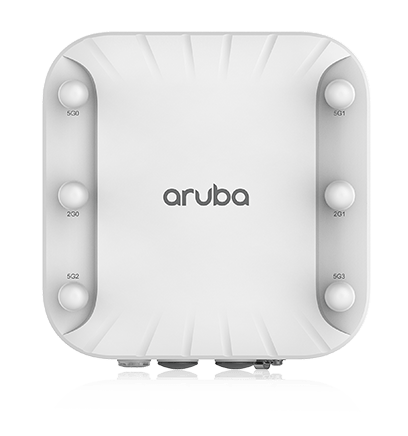
Aruba 518 Series Ruggedized Access Point
High performance Wi-Fi 6 for harsh weather-protected and extreme temperature environments

Aruba AP-518 (RW) with Wi-Fi 6 (802.11ax)
Our Price: Request a Quote
Click here to jump to more pricing!
Please Note: All Prices are Inclusive of GST
Overview:
The Aruba 518 series access points with Wi-Fi 6 (802.11ax) technology deliver high performance connectivity in harsh weather-protected environments such as warehouses, industrial freezers or enclosures in extreme environments.
The 518 series is designed to simultaneously serve multiple clients and traffic types in dense environments utilizing the Wi-Fi 6 standard.
Innovations include AI-powered RF optimization, Live upgrades, WPA3 and Enhanced Open certified security, and unified wired and wireless policy with Dynamic Segmentation.
Why Choose Aruba AP 518?
User and app firewall
The Aruba Policy Enforcement Firewall controls user and IoT access at the point of connectivity and is the underlying technology for Aruba Dynamic Segmentation.
Unsurpassed client experiences
Aruba ClientMatch, part of Aruba’s AI-powered mobility solution, intelligently groups Wi-Fi 6 and MU-MIMO capable clients on the best-performing APs to optimize performance and roaming.
IoT platform capabilities
Aruba Wi-Fi 6 and Wi-Fi 5 APs include support for Zigbee, Bluetooth, and 3rd party overlays to simplify the deployment and management of IoT services.
Related Products
Specifications:
| HARDWARE VARIANTS |
|---|
|
| WI-FI RADIO SPECIFICATIONS |
|---|
|
| ADDITIONAL INTERFACES |
|---|
|
| POWER |
|---|
|
| MOUNTING |
|---|
|
| MECHANICAL |
|---|
|
| ENVIRONMENTAL |
|---|
|
| REGULATORY COMPLIANCE |
|---|
For more country-specific regulatory information and approvals, please see your Aruba representative. |
| REGULATORY MODEL NUMBER |
|---|
|
| CERTIFICATIONS |
|---|
|
| MINIMUM OPERATING SYSTEM SOFTWARE VERSIONS |
|---|
|
Documentation:
Pricing Notes:
- All Prices are Inclusive of GST
- Pricing and product availability subject to change without notice.
Aruba AP-518 (RW) with Wi-Fi 6 (802.11ax)
Our Price: Request a Quote

